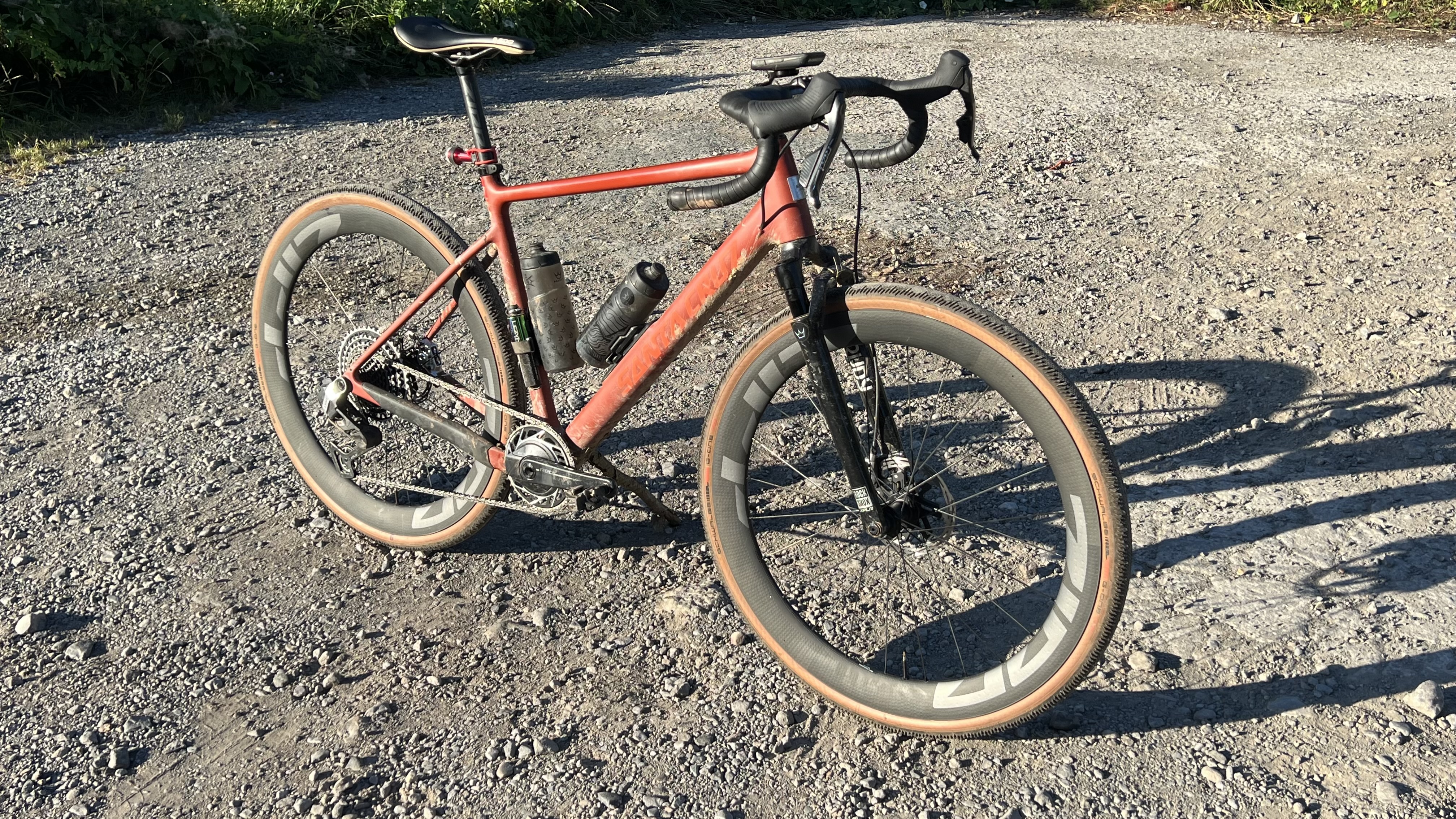
We covered the specs and stats of SRAM’s new flagship RED XPLR AXS gravel groupset when it was released at the start of August, and I’ve now ridden several hundred tough kilometers on this radical 13-speed, MTB-influenced wireless supergroup.
So, how do the new features work in the wild, are they really worth the premium price, how does it compare to previous SRAM gravel groups, current SRAM MTB groups, and options from Shimano and Campagnolo?
Finally based on its pros, cons, and physical requirements who do I think should XPLR what SRAM's latest tech can do for their riding and who is it a Red flag for?
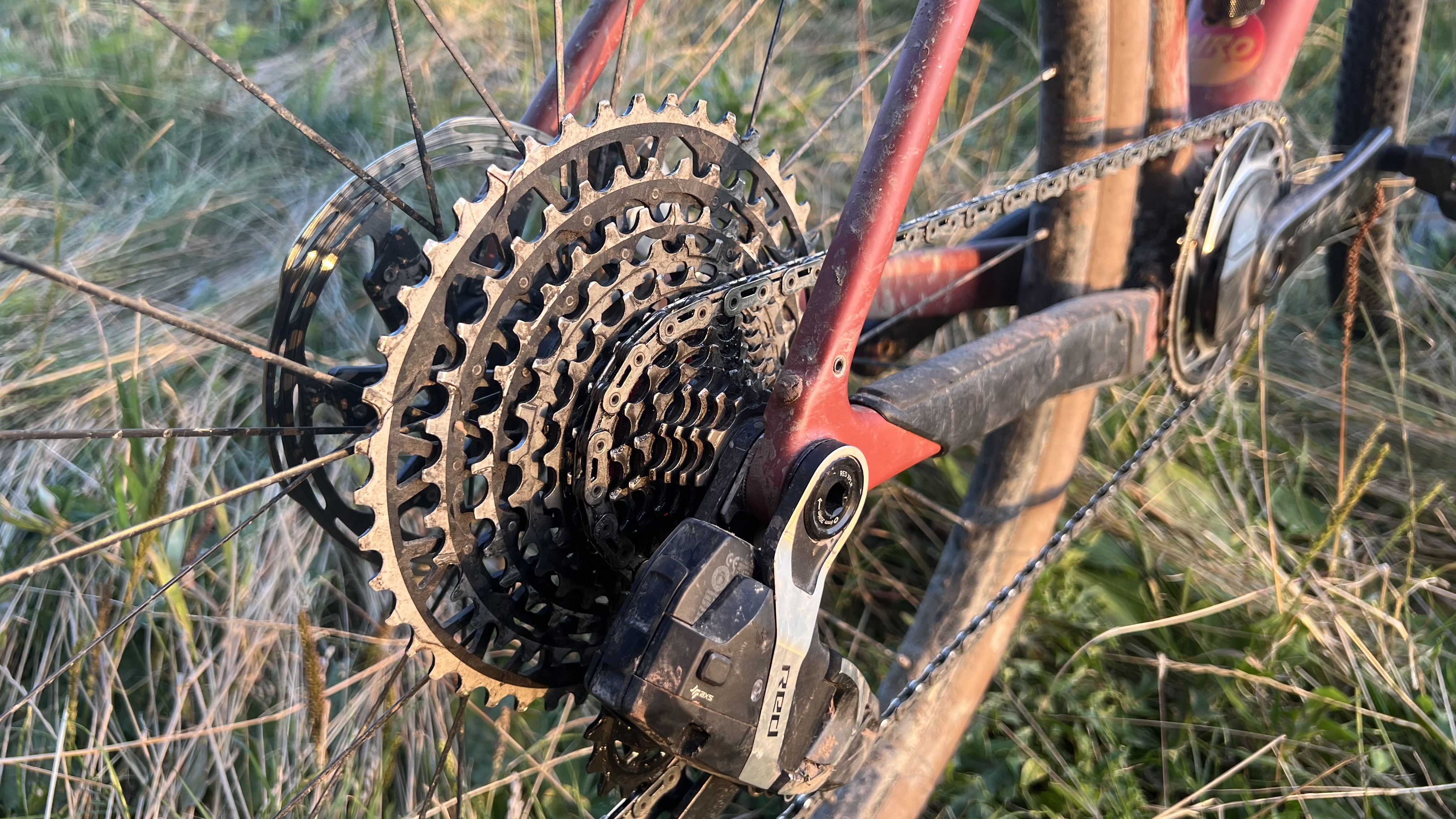
Red flag?
Let’s start by being honest about how exclusive SRAM RED XPLR AXS is both financially and physically. The $3,979 / £3,980 / €4,465 price tag for the complete group is obviously going to put RED XPLR AXS out of reach of a lot of riders straight away.
Red’s ‘Full Mount’ relies on a UDH (Universal Derailleur Hanger) frame with a chainstay length of at least 415mm and a chain line of 47.5mm for the XPLR gears and ‘Wide’ cranks. Current UDH gravel frame options are very limited and again likely to be flagship frames only, adding further expense to the complete Red ownership package.
It’s not MTB compatible either because it’s designed around the hub / spoke geometry of a 142mm rear axle, not a 148mm and it doesn’t have enough chain growth to cope with suspension movement.
Even if it’s fiscally fine and fits your bike, it’s still not the right choice for everyone. Some people are going to want a wider gear range than the 10-46T cassette that the RED XPLR AXS mech depends on. You can use the Red XPLR levers and brakes with a SRAM Eagle AXS MTB rear mech and 10-52 tooth MTB cassette but that only gives you 12 not 13 speeds.
Speaking of sizing while the new hood shape definitely fits smaller hands better than before there’s still a way to go for RED XPLR AXS – or any other hydraulic brake system levers – not to be an overstretch for particularly petite paws.
Finally, lots of riders still prefer the simple repairability of a wired rather than a wireless shift system. Especially those heading into more remote or tougher environments.
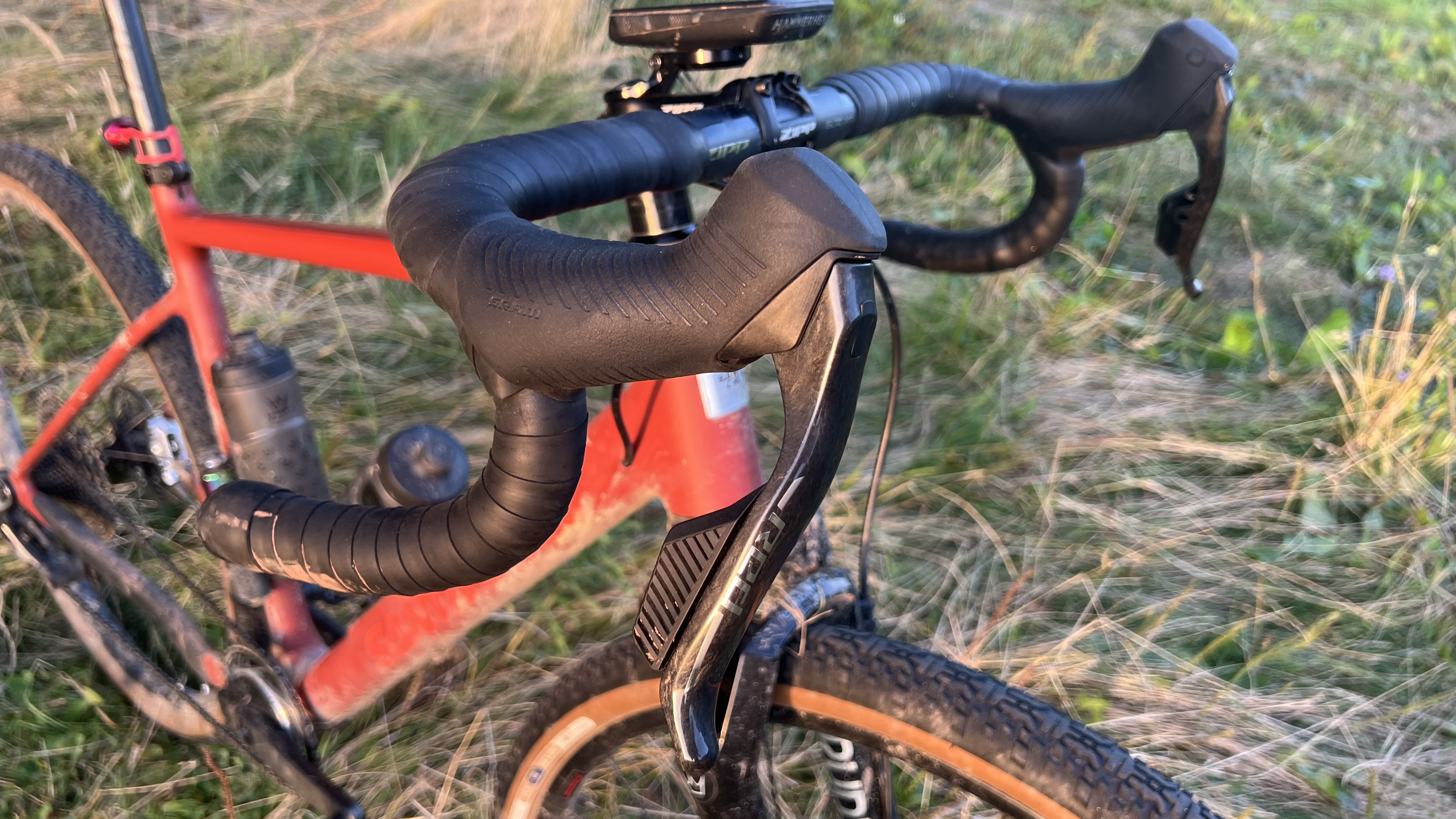
Braking new ground
The biggest win with the new RED XPLR AXS are undoubtedly the levers and brakes. The remodelled design adds 5mm of reach, but reduces body size for better comfort and a more secure grip. The way the remodeled levers miss the flared XPLR bars rather than pulling into the tape if you run the reach adjust tight in is another real win compared to the previous SRAM. Even the lever hood covers are designed to help set up with their ‘so simple it’s genius’ spirit-level markings.
Moving the pivot point and mounting the brake master cylinder horizontally not vertically has added a very obvious power boost to the cutaway brake calipers as well. Even on hot and sticky tarmac, I could lock up the tires easily with a single finger, but there’s enough nuance in the progressive delivery to surf that skid boundary accurately on slippery surfaces. Even though I colored the rotors up and got a good cooking smell on the steepest descents with a loaded bike, there was never a trace of fade or pump out either.
The bonus shift/function button built into the horn of the hoods is a neat feature if you don’t want to tap the brake lever, or you want to control a dropper post, Hammerhead computer mode, or Flight Attendant fork lockout separately. The low profile means there’s no tangible haptic to it in thin gloves and I think it could be more ergonomically placed.
New RED XPLR AXS shifter/brakes also sync with any other current or previous components in the SRAM AXS ‘ecosystem’ including Reverb AXS wireless dropper posts and any AXS rear mech (road, gravel or MTB) you may already have.
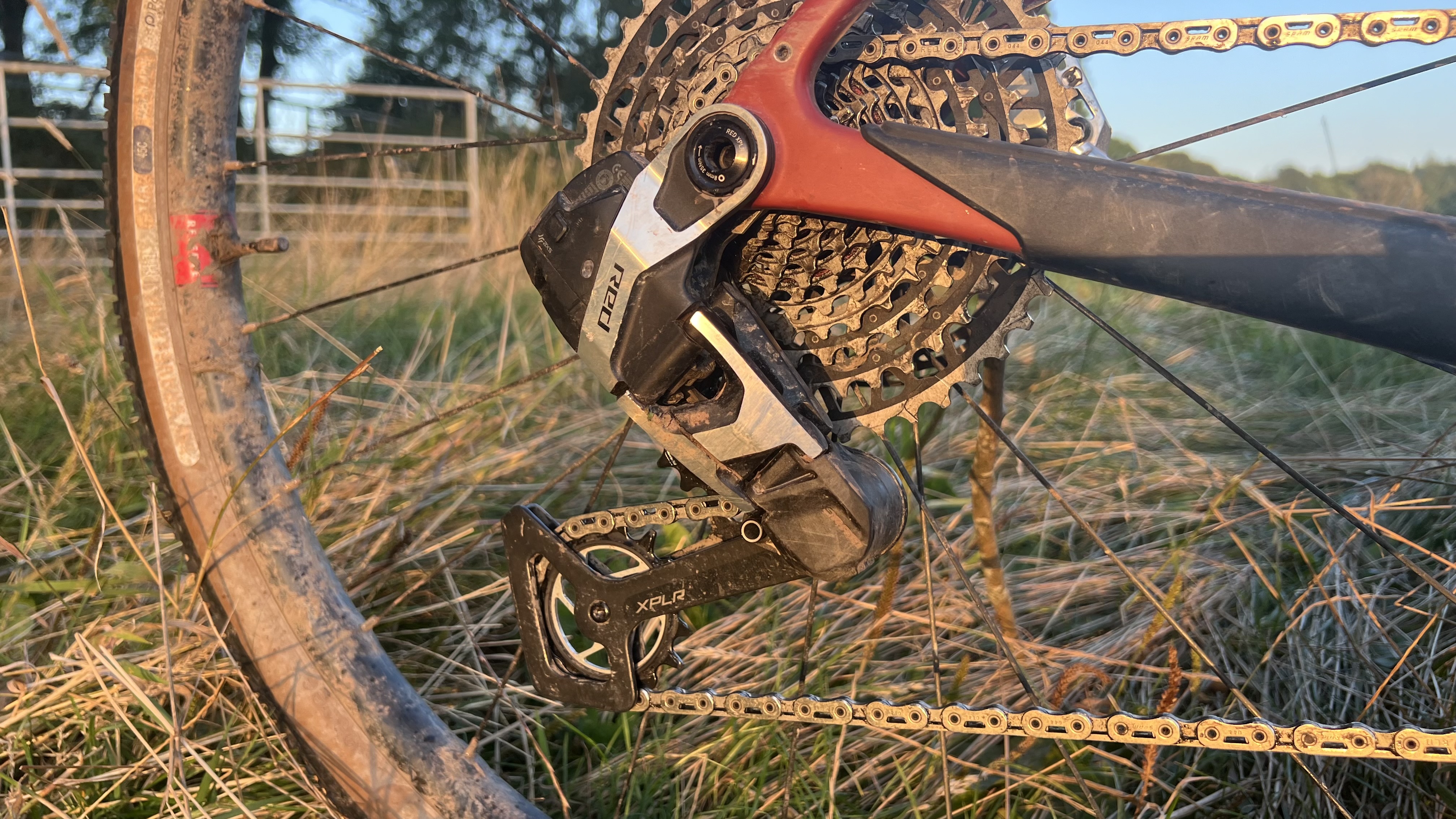
Lucky for some
If you stick with the complete Red XPLR group, the 287g, 13-speed 10–46 tooth cassette is an awesome piece of kit. The modular design makes it 90g lighter than the previous 10–44T Force cassette and the extra cog makes it much easier to keep an even, efficient pedal speed at the fast end of the gear selection.
While it’s not quite as quick as Shimano GRX Di2 or a well-tuned analog shift, RED XPLR AXS is a lot faster across the gears than the alternating teeth of SRAM’s T–Type MTB gears. It’s still a very sure and solid shift under power though and I haven’t dropped a chain once in nearly 500km of testing. Even with the big rear mech and batteries, the featherweight cassette, and hollow carbon crank arms, RED XPLR AXS only weighs 1410g. That’s 50g lighter than Campagnolo Ekar and means SRAM RED XPLR AXS is now the lightest gravel group available.
Despite the low weight, the whole Full Mount UDH setup feels super solid and once I’d drilled out a seized conventional hanger it was a complete breeze to set up when installing RED XPLR AXS to its Santa Cruz Stigmata host. Even without headset routing pressing a few AXS buttons to sync everything up is a dream compared to a metal cable system or Shimano’s semi-wireless Di2. The SRAM AXS app makes customizing functions and keeping track of battery life and even shift patterns a simple scrolling exercise too.
In a world where awkward setup and wonky reading still seem the frustrating norm the RED XPLR AXS power crank is a joy to use in the same way the XX SL MTB crank I’ve been riding for nearly a year continues to be. While it’s not a true double-sided measuring system it does a great job of aggregating input to mimic separate sensors and there’s plenty of data to deep dive into if you - or your coach - is inclined. From the sound of it, there’s plenty more to add to onboard analysis with the new Hammerhead head unit too, but I’m still waiting for my test sample of that.
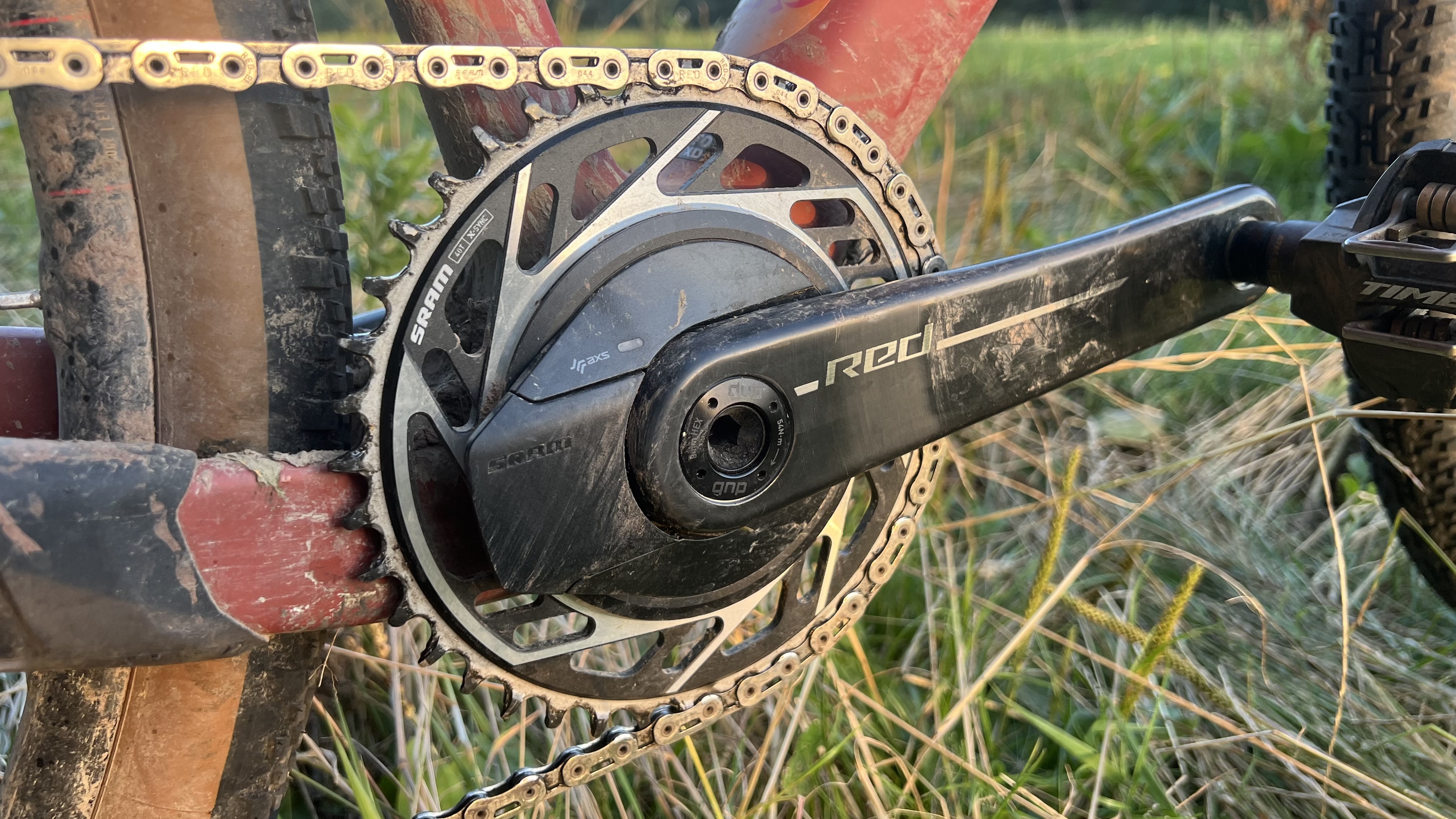
Formula One tech, Rally durability
I’ve tried to expose XPLR to as much on-trail hostility as possible in the couple of weeks I’ve had it and so far it hasn’t skipped a beat. Experience with other comparable components from SRAM suggests the Hard Chrome Flat Top chain and cassette will be very durable too. The three largest cogs are now faster-wearing alloy though so I'll keep you in the loop on whether they turn out to an Achilles heel as the miles add up .
While worries about the skinny stays of a gravel bike mean I’ve not been tempted to jump up and down on the mech, it’s got the same ‘knock and reset’ feature as the T–Type MTB mechs to protect it from trailside trauma and crashes. The 'Magic' two-piece lower jockey wheel with its free spin feature has definitely saved the low-hanging rear mech at least once when I felt a stick catch in it while combine harvesting along overgrown trails.
I’m still on my first battery charge at over 500km and 30 hours of bike time (it’s been really steep and slow in places, OK!), which suggests the lighter clutch spring takes less toll on the battery than the MTB gears.
Rather than being built into the chainrings as on SRAM’s 2X chainset designs, the power meter attaches separately to the cranks like a spider. The chainring then screws onto the outside edge so it can be replaced separately when worn rather than having to throw away the power meter at the same time. The mech is rebuildable too and the Cage Lock feature makes chain servicing and rear wheel removal very easy as well.
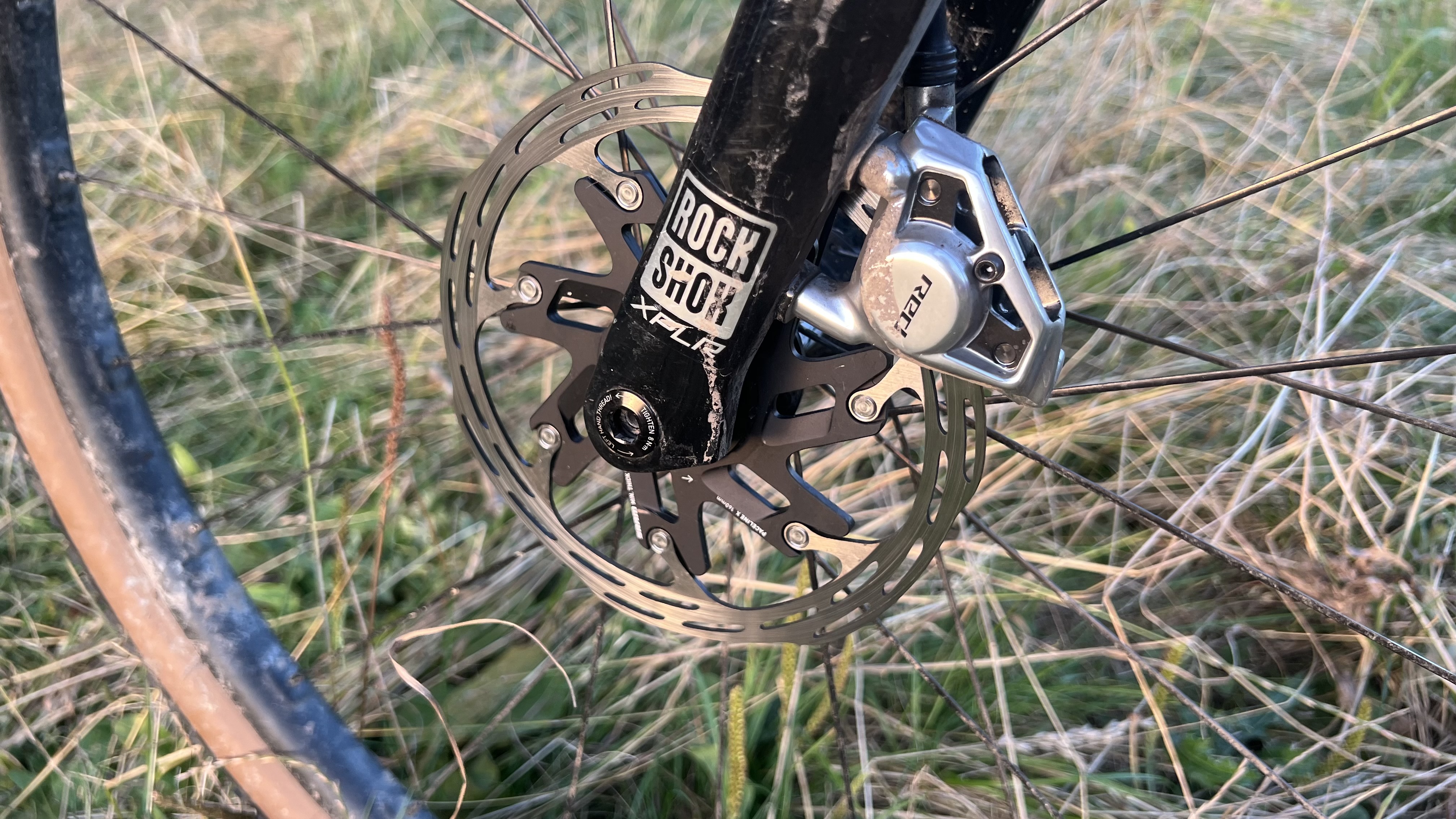
Verdict
With its ‘You could buy a really good complete gravel bike for less than that’ price, battery-driven wireless shifting, and UDH frame-only compatibility, SRAM RED XPLR AXS certainly isn’t for everyone. However, if you can fit and afford it, it represents a genuine level up in terms of gravel groupset performance. Shifting performance is very good, ergonomics are excellent, and the power meter and brakes are the best I’ve used. It’s also the lightest and easiest to set up groupset you can configure in the widest range of options. Despite all the tech, it’s a very physically tough and likely extra durable groupset loaded with lots of very clever life-extending features as well.
While RED XPLR AXS is flagged as a no-go for MTB I know from conversations I’ve had that I’m not the only one already frothing at the idea of a 13-speed XC group. Especially one that’s lighter, tighter geared, and shifts significantly faster than the current T–Type.
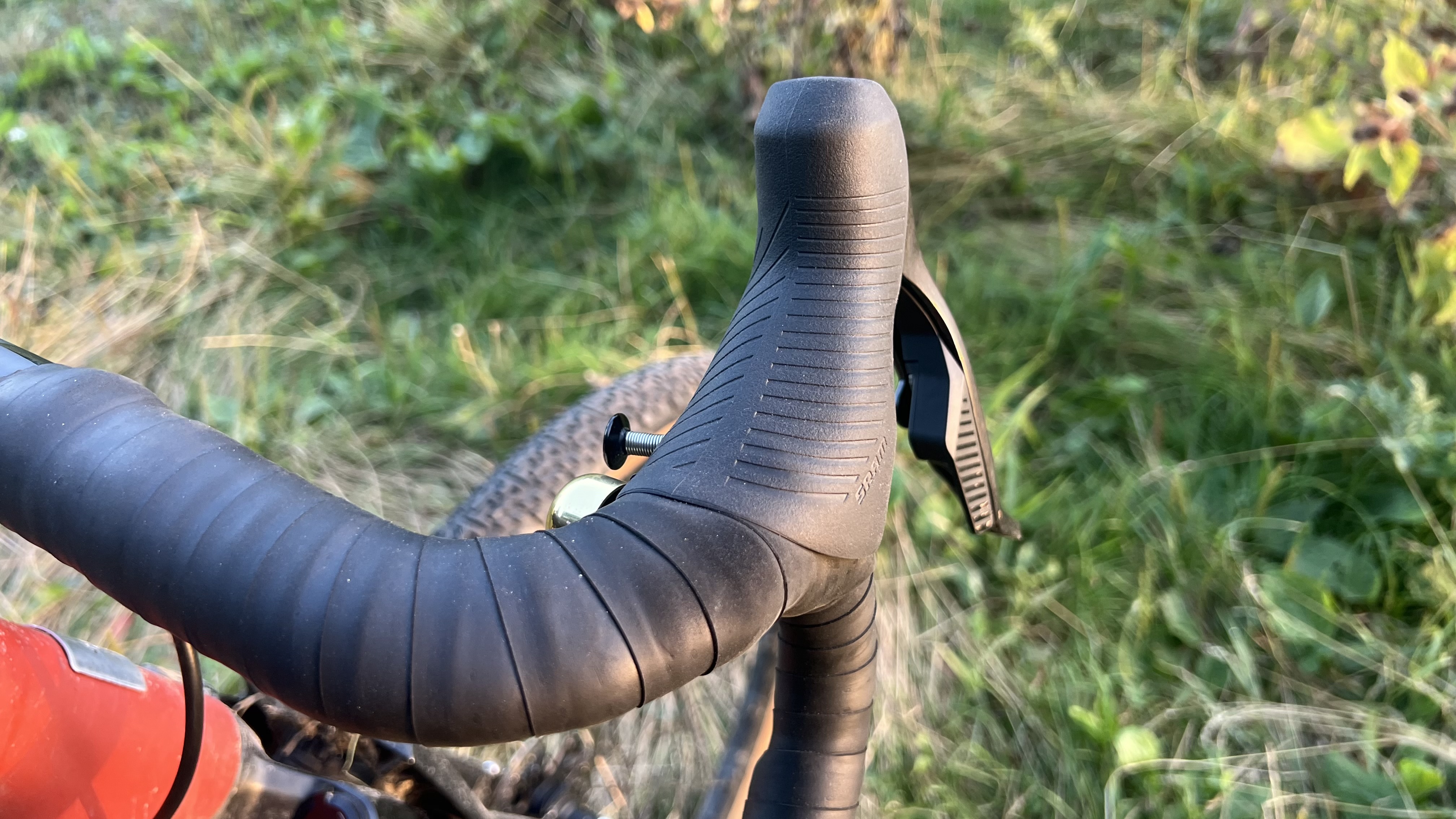
Tech Specs: SRAM RED XPLR AXS
- Price: $3,979 / £3,980 / €4,465, $3,979 / £3,980 / €4,465 (without power meter)
- Crank sizes: 160-175mm lengths
- Chainring sizes: 38-46T
- Complete groupset weight: 2,410g







